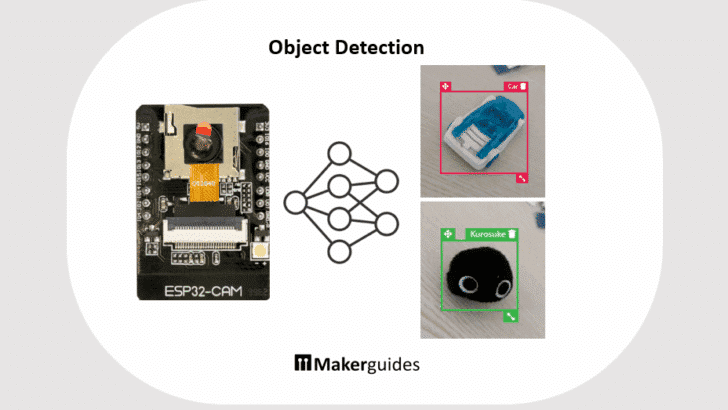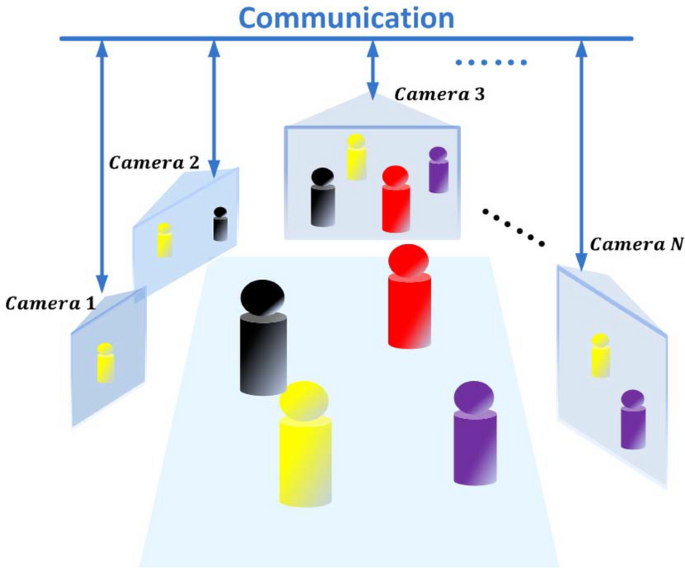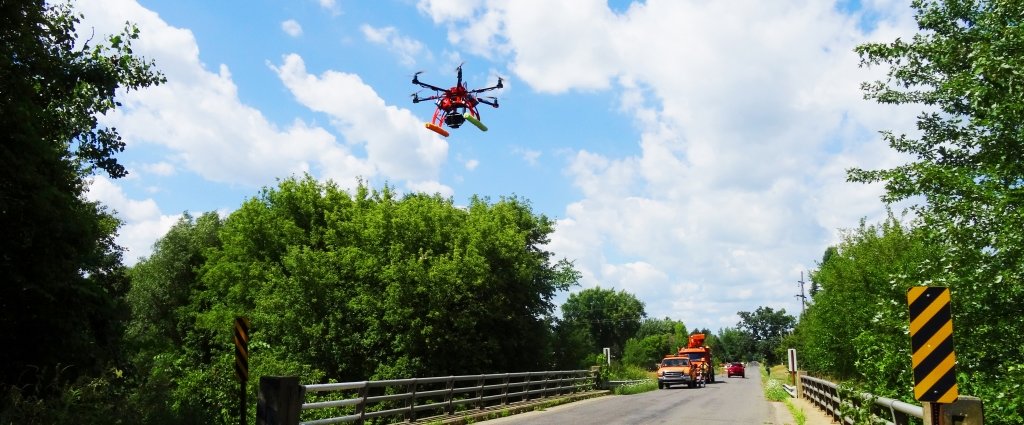Our modern world is built on a complex web of infrastructure: railways, bridges, power grids, and sprawling urban centers. For decades, maintaining this intricate network has relied on manual inspections and reactive repairs—a costly, time-consuming, and often inefficient process. A crack in a bridge might go unnoticed until it becomes a critical failure; a fault on a railway line might only be discovered after it causes significant delays. Today, a powerful technological shift is underway, driven by the convergence of high-resolution imaging and artificial intelligence. AI-enabled cameras are emerging as the vigilant, tireless guardians of our infrastructure, promising a future of proactive maintenance, enhanced safety, and unprecedented operational efficiency. This is a major development in the world of AI Cameras News, with far-reaching implications for how we build and manage our societies.
These intelligent vision systems are moving beyond simple security applications, evolving into sophisticated diagnostic tools. By continuously monitoring critical assets, they can detect subtle anomalies, predict potential failures, and provide actionable data to operators in real-time. From railways and public transit to energy grids and smart cities, AI cameras are creating a new paradigm of infrastructure management, turning passive structures into data-rich, self-monitoring ecosystems. This article delves into the technology behind these systems, explores their diverse real-world applications, examines the challenges of implementation, and looks toward the future of intelligent infrastructure monitoring.
The Anatomy of an AI-Powered Monitoring System
At its core, an AI camera system for infrastructure is more than just a camera; it’s an integrated solution comprising hardware, software, and connectivity. Understanding these components is key to appreciating their transformative potential. These systems represent a significant trend in AI Monitoring Devices News, combining several cutting-edge technologies.
Advanced Imaging Hardware
The “eye” of the system is a specialized camera, often ruggedized to withstand harsh environmental conditions. The choice of sensor depends entirely on the application:
- High-Resolution Visual Cameras: These are the workhorses, capturing detailed images in the visible spectrum. They are ideal for detecting surface-level defects like cracks in concrete, loose bolts on a railway track, or damaged signage. * Thermal (Infrared) Cameras: These sensors detect heat signatures, making them invaluable for identifying issues that are invisible to the naked eye. For example, they can spot overheating components in an electrical substation, friction hotspots on train wheels, or heat loss from buildings, a key area of interest in AI for Energy / Utilities Gadgets News.
- LiDAR and 3D Cameras: By using laser pulses or stereoscopic vision, these systems create detailed three-dimensional maps of their surroundings. This is crucial for detecting structural deformation in bridges, measuring vegetation encroachment along power lines, or ensuring clearance in tunnels for autonomous vehicles.
The Brain: Edge and Cloud AI Processing
The raw data captured by these cameras is useless without interpretation. This is where artificial intelligence, specifically deep learning models like Convolutional Neural Networks (CNNs), comes into play. The processing can happen in two primary locations, a topic frequently discussed in AI Edge Devices News.
Edge Computing: For applications requiring real-time decisions, the AI model runs on a small, powerful computer located directly on or near the camera. This is essential for a system on a high-speed train or in an Autonomous Vehicles News context, where latency could be catastrophic. The device processes the video feed locally, identifies a potential fault, and sends only a small alert packet to a central server, saving immense bandwidth.
Cloud Computing: Data can also be streamed to powerful cloud servers for more intensive analysis. This approach allows for the aggregation of data from thousands of sensors across a network, enabling large-scale trend analysis, predictive modeling, and continuous retraining of the AI models to improve their accuracy over time. This is a crucial element of the broader AI Sensors & IoT News landscape.
The Neural Network: Training the AI Model

The AI model is trained on vast datasets containing thousands of images labeled by human experts. For a railway application, this would include images of “healthy” tracks and various examples of faults: cracked rails, loose fasteners, and foreign objects. Over time, the model learns to distinguish between normal and anomalous conditions with remarkable accuracy. This continuous learning process is what makes the system “smart” and adaptable.
Real-World Applications: From Smart Cities to Resilient Grids
The theoretical capabilities of AI cameras are impressive, but their true value is demonstrated in their growing number of real-world deployments. These systems are no longer just research prototypes; they are active components of modern infrastructure management.
Revolutionizing Rail and Public Transit
Public transportation networks are a prime use case. AI cameras mounted on the front and undercarriages of trains can perform multiple tasks simultaneously:
- Track Inspection: Continuously scanning the rails for defects like cracks, warping, or missing components. This replaces slow, manual “walking inspections” and can identify issues before they cause derailments or delays. * Overhead Line Monitoring: On electric railways, cameras monitor the pantograph (the arm connecting the train to the overhead wire) and the wire itself for wear, damage, or ice buildup.
- Vegetation Management: Using LiDAR or 3D cameras, the system can detect trees and branches encroaching on the railway corridor, automatically flagging them for trimming crews. This is a critical safety function, and a great example of AI Gardening / Farming Gadgets News principles applied to a larger scale.
A successful pilot program can lead to a network-wide rollout, drastically improving reliability and passenger safety by shifting from a reactive to a predictive maintenance schedule.
Building Smarter, Safer Cities
In urban environments, AI cameras are the sensory backbone of smart city initiatives, a topic of major interest in Smart City / Infrastructure AI Gadgets News. They are used to:
- Optimize Traffic Flow: By analyzing vehicle and pedestrian density in real-time, AI systems can dynamically adjust traffic light timings to reduce congestion and improve emergency vehicle response times. * Enhance Public Safety: While controversial, these systems can be used for crowd management, detecting unattended baggage, or identifying traffic accidents automatically to dispatch help faster. This intersects with developments in AI Security Gadgets News. * Maintain Public Works: Cameras mounted on city vehicles, like garbage trucks or buses, can passively monitor road conditions, automatically reporting potholes, faded lane markings, or damaged street signs to the relevant departments.
Ensuring Energy and Utility Resilience
The energy grid is another critical area where AI vision is making an impact. Drones equipped with high-resolution and thermal cameras are a game-changer. As covered in Drones & AI News, these autonomous systems can fly along hundreds of miles of power lines in remote areas, using AI to spot cracked insulators, corroded towers, or vegetation risks far more quickly and safely than human crews.
Implications, Hurdles, and Ethical Considerations
Deploying AI camera systems at scale is not without its challenges. The technical, financial, and ethical hurdles must be carefully navigated to ensure successful and responsible implementation.

The Data Dilemma: Training and Bias
The performance of any AI system is directly tied to the quality and quantity of its training data. A model trained only on images of tracks in sunny, clear weather may fail spectacularly during a snowstorm or in heavy fog. Creating a comprehensive, diverse, and accurately labeled dataset is a massive undertaking. Furthermore, there is a risk of “model drift,” where the AI’s performance degrades over time as real-world conditions change. This requires a continuous process of data collection, retraining, and validation, which is a significant operational overhead.
Hardware, Connectivity, and Cost
Retrofitting existing infrastructure with thousands of cameras, sensors, and edge processing units is a major capital investment. The hardware must be incredibly robust to survive years of vibration, extreme temperatures, and weather exposure. In remote areas, providing reliable power and high-bandwidth connectivity for data transmission can be a significant logistical and financial challenge. The decision between edge and cloud processing involves a complex trade-off between latency, bandwidth costs, and centralized processing power.
The Privacy and Security Tightrope
Perhaps the most significant challenge is the ethical dimension, particularly regarding privacy. When AI cameras are deployed in public spaces, they inevitably capture images of people. This raises legitimate concerns about mass surveillance and the potential for misuse of data. Best practices are crucial:
- Anonymization: Using on-device processing to blur faces and license plates in real-time, ensuring that only non-personally identifiable information is stored or transmitted. * Purpose Limitation: Having strict policies that define exactly what the system is used for (e.g., detecting potholes) and prohibiting its use for other purposes (e.g., tracking individuals). * Cybersecurity: These connected systems are potential targets for cyberattacks. A compromised system could be used for espionage or to cause physical disruption. Robust end-to-end encryption, secure access controls, and regular security audits are non-negotiable. This is a critical aspect of AI Security Gadgets News.
Best Practices and the Future Outlook

For organizations considering this technology, a strategic approach is essential. The future promises even greater integration and capability, extending beyond simple monitoring.
Recommendations for Implementation
- Start with a Focused Pilot: Begin with a well-defined problem in a limited area. For a railway, this could be a single line known for frequent delays. This allows the organization to test the technology, validate the ROI, and iron out operational kinks before a large-scale rollout.
- Prioritize a Human-in-the-Loop: In the early stages, AI should augment, not replace, human experts. Alerts from the AI system should be reviewed by an experienced operator to confirm the fault and reduce false positives. This builds trust in the system and provides valuable feedback for retraining the model.
- Develop a Robust Data Strategy: From day one, have a clear plan for data storage, security, privacy, and lifecycle management. This includes policies for how data is labeled, who can access it, and how long it is retained.
The Road Ahead: Integrated and Autonomous Systems
The evolution of this technology is heading towards greater integration and autonomy. We can expect to see AI camera data feeding directly into “digital twin” models—virtual replicas of physical infrastructure—to simulate the impact of wear and tear over time. This will enable even more accurate predictive maintenance.
In the future, the loop may be closed entirely. An AI camera on a drone could identify a damaged insulator on a power line, and a second, specialized drone or a robot from the world of Robotics News could be dispatched to perform the repair autonomously. This synergy between AI vision and robotics, including AI Personal Robots for smaller tasks, will be transformative. The same principles of visual AI are also driving innovation in consumer tech, from Robotics Vacuum News to AI Phone & Mobile Devices News, where camera intelligence is a key feature. The insights gained from large-scale infrastructure projects will undoubtedly trickle down, enhancing everything from AI Fitness Devices News that use cameras to track form, to AR/VR AI Gadgets News that map environments in real-time.
Conclusion
AI-enabled cameras represent a monumental leap forward in our ability to manage and maintain the critical infrastructure that underpins our society. By providing a constant, intelligent, and non-invasive oversight, these systems enable a transition from a costly reactive model to a highly efficient, data-driven, and proactive one. The benefits are clear: increased safety, improved reliability, reduced operational costs, and extended asset lifespan. However, the path to widespread adoption requires careful navigation of significant technical, financial, and ethical challenges, especially concerning data privacy and security. As the technology matures and becomes more integrated with robotics and predictive analytics, these all-seeing eyes will become an indispensable tool in building the resilient, responsive, and intelligent infrastructure of the 21st century.








